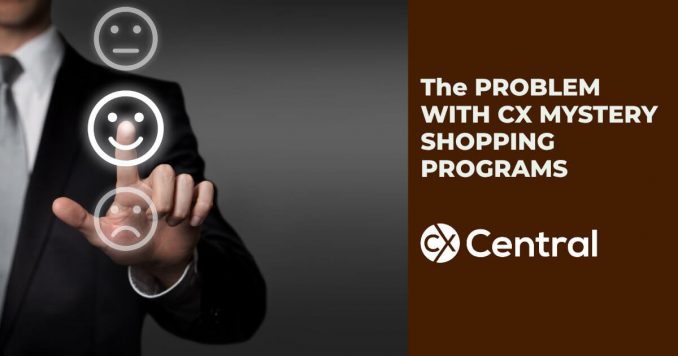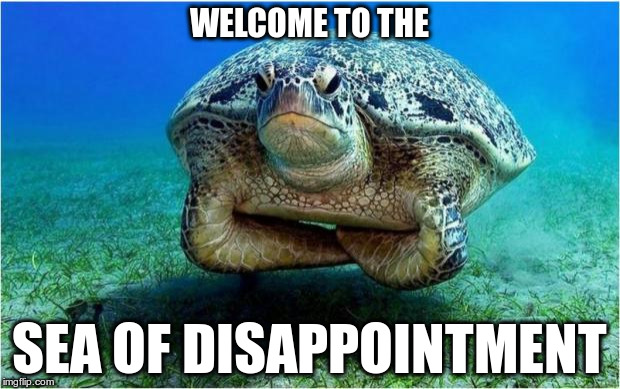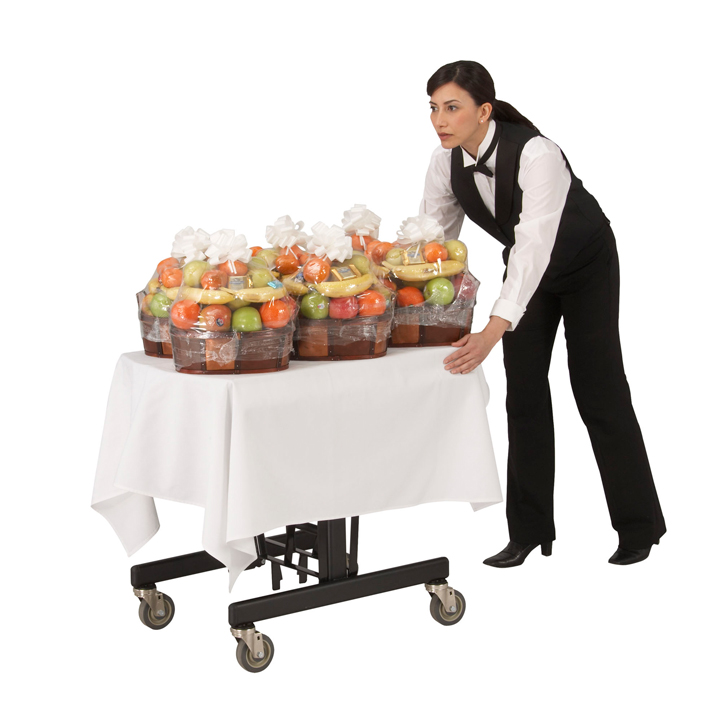
The problem with CX Mystery Shopping programs
Some time back one of the local Awards Clubs introduced a Customer Experience Mystery Shopper Award into its portfolio.
Cool, I thought – it will be interesting to see what a real CX Mystery Shopper Award looks like as per a global vendor.
A short time later, I was helping a hospitality Client set up and refine the Quality Assurance program for their Contact Centre.
A group of 20 senior folks were gathered together in the conference room, and we were in the midst of selecting & defining quality standards when one of them stopped and asked:
Hey, Dan, – did you know that we entered the Customer Experience Mystery Shopper Award this past year?
No, I said – how did it go?
Well, – we aren’t so sure.
Because in this workshop I’m getting a sense of the complexity that goes into setting quality standards – but I’m not so sure it was this rigorous in our Awards entry.
He continued…
As a matter of fact, I have our final report from the Mystery Shopper vendor here on my laptop – can we flash it up and talk about it?
But of course!
The cover slide whirred up on the screen.
Opening slide – very formal – The CX Mystery Shopping Report etc. etc.
We were all ready. And then, next slide…
THE GREETING – score 98%
What? The Greeting? Oh – ok. Anyway 98%

Then the next slide…
GET THE CUSTOMER NAME – score 97%
Oh.
And it carried on from there.
Slide after slide after slide reported on a compliance measurement – even the Hold Technique was featured.
As we hit slide 20+ something someone in the room turned to me and asked – So Dan what do you think?
Well, it was an easy question.
Well guys I said– you have a wonderful compliance report here – but I haven’t seen anything yet that even remotely measures or talks or informs about the Customer experience.
And the room agreed.
Interestingly – in this report, – there was a final measurement slide that said CUSTOMER EXPERIENCE (yes – that’s right – a single slide).
Score – 58%.
But the legend was unclear as to how the score was derived.
After some discussion around the table, we guessed that perhaps this was the personal score or viewpoint of the Mystery Shopper.
But without any commentary or explanation, it was unclear.
Let’s put it on the table right now.
If the first thing that comes to your mind in conducting a Customer Experience-based Mystery Shopper program is The Greeting – then you are most certainly on the wrong track.
There’s a lot of compliance-based Mystery Shopper work going on out there
There are certainly some valid reasons for having a solid compliance-based Mystery Shopper program.
They’re used extensively in the banking & finance industry for a variety of purposes, including ensuring regulatory compliance.
In the Public Sector compliance-based programs provide a basic ‘minimum-standard’ dipstick – to provide high-level assurance that when an email gets sent – it receives a reply.
Or when a telephone call is placed, some kind of basic response – along with basic courtesy – is provided.
While it’’s rare to see a Public Sector program skew heavily to the Customer experience (now there’s an opportunity I’d love to be part of!) compliance-based programs ensure some level of essential service is provided.
Another good example of a compliance program is ensuring that things work the way they are supposed to work.
That when a certain telephone number is used at a certain time of day – it goes to the right place (you’d be surprised how many times it doesn’t).
Or when a certain set of IVR options or digital instructions are followed, that the Customer ends up where they were supposed to and got what they needed.
As channels proliferate, it’’s really important to ensure that channel mechanism work the way they are supposed to – it’s complex.
We’ve seen a predictable rise in the number of compliance-based Mystery Shopper programs that test cross-channel (even omnichannel) performance.
So, in conclusion, – it’’s not right to say that compliance-based programs are ‘bad’ while CX-based programs are ‘better.
It’’s always about what you want to learn.
But there’s a big opportunity in putting together a solid Customer Experience-based Mystery Shopper program and our work in this arena tends to be with the more forward-thinking and innovative organisations.
If you are considering a compliance-based program ask yourself – what am I going to learn from this program that I couldn’’t get from my own Team Members?
Assuming that you’re not conducting Mystery Shopper because you have to (such as described earlier for the finance or Public Sectors), I’d ask myself a very simple question before starting.
What am I going to learn from this Mystery Shopper program that my own Team Members – both Management & Frontline – wouldn’t have already picked up on?
Once, when meeting with a fancy hotel chain, the resident Trainer told me in a very proud tone that their Mystery Shopper – apparently a hotel expert who travelled the world – had picked up that the wheels on the room service trolley were squeaky.
And before I could think (and perhaps keep my mouth shut) I blurted out – why would you pay someone for that?

Shouldn’t your Room Service Supervisor pick up on that?
What kind of culture exists around here that your own Team Members wouldn’t find and fix such matters on their own?
At the end of the day, if the program looks and feels ‘police-based’ it will be wildly unpopular – and that makes improvement efforts very difficult.
The key is always to define the purpose – a set of objectives – for the program – that will resonate with Stakeholders and set the Organisation up for future success.
Now – on to Customer Experience-based Mystery Shopper programs!
So what does a real Customer experience based Mystery Shopper program look like?
There is no one single model – and we share a few here from our work with Clients.
Let’s start this discussion with the brand.
Some people say that the brand is what your organisation stands for – and that the Customer experience is the journey the Customer has with the brand.
If the brand propositioned aligns with the experience – that’s great news all around.
But because of factors like organisational silos – with different leadership styles & cultures – and departmental performance objectives which may or may not align to organizational objectives.
In fact, large gaps can appear at different points on the journey – which represent opportunities for improvement.
If your brand values include things like trust, or accuracy, or delight – then these values can be codified and studied during the Mystery Shopper journey.
It’s very doable.
And hey – what about emotion?
One of my favourite things about the rise of Customer Experience as a business strategy is the inclusion of emotion in business discussions.

For too long, Customers (and to some degree Employees) have been treated as batches of numbers, or ‘segments’ that are to behave and perform in certain ways.
But if you read any established CX authority you’ll not how quickly the topic of emotion comes up – and strongly indeed!
What emotion do you want to evoke? They’ll ask.
And it’’s dead on.
So in our work designing Customer-experience based CX Mystery Shopping programs we always talk about emotions.
At the end of the meal, how should the Customer feel?
At the end of the phone call, visit to the store, inquiry at the Concierge desk – what emotion is to be evoked?
Let’s be frank – if you don’t know what emotions you are trying to evoke – how will your Team Members know?
Testing emotion is one of the best things you can do in a Customer Experience-based Mystery Shopper program.
The Diary approach to thoughts & feelings
For a well-known theme park, we conducted a series Mystery Shopper visits that incorporated thoughts & feelings which were recorded in a diary.

Documented over the course of 8-hour visits, the final report quite lengthy.
But the good news was that after each visit was done, we were able to boil down the observations across the theme park journey into a number of themes.
After all, Mystery Shopper research – like Focus Groups – is a deep dive qualitative research methodology.
What was great – as well – about this program was that no score was assigned.
It wasn’t about the score, it was about designing an observation through the eyes of a ‘stand-in’ Customer.
The report became legendary and we still have company management write to us now and then on how useful (and revolutionary) the approach had been for them.
At the very minimum
At the very minimum – if you are ready to use Mystery Shopper as a CX tool (and it’’s a great one because it’’s about the Customer journey), consider upgrading your measurements beyond simple compliance standards.
Sure – compliance standards are easy to measure.
But they have very little to tell you with regard to the thoughts, emotions, feelings & Customer journey.
Mystery Shopper – when professionally designed and managed – is a terrific tool for understanding the Customer journey.
But just adding the phrase ‘Customer Experience’ to something doesn’t make it so.
Thank you for reading!
Note: Daniel Ord is a regular presenter in Australia running his popular Customer Experience training courses. See what’s coming up on CX Skills.
Search a supplier list of CX Mystery Shopping programs on the ACXPA Supplier Directory >


Be the first to comment